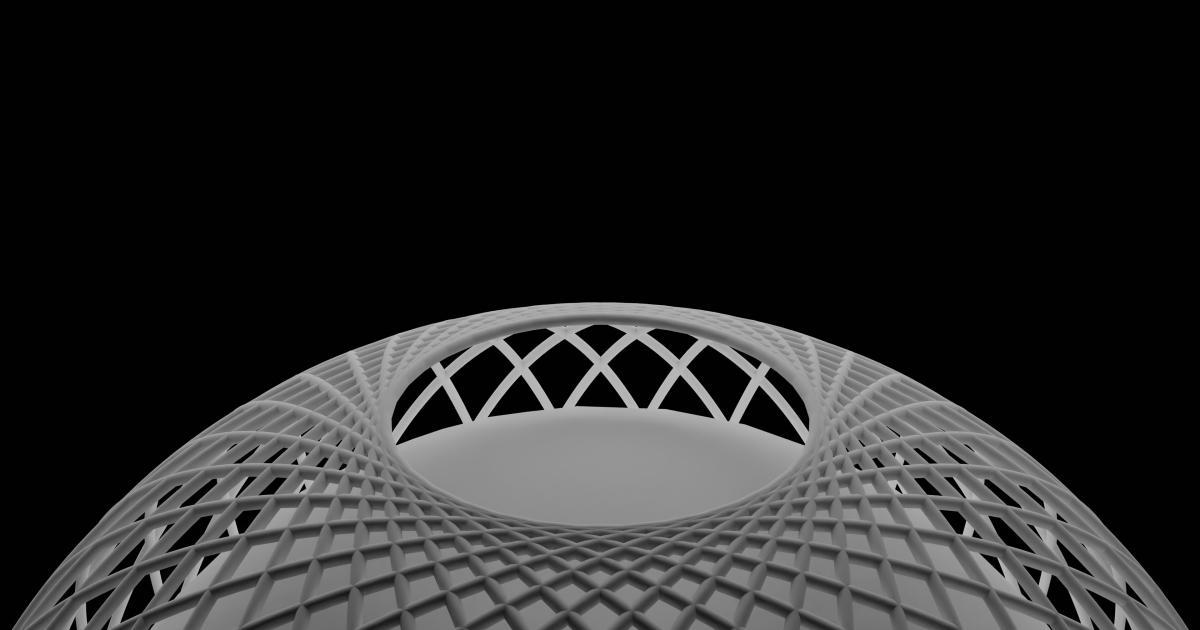The Controversial Facts About Site Architecture for Content Sites


Introduction: The Importance of Site Architecture for Content Sites
In the ever-evolving digital landscape, the success of a content site often hinges on its site architecture. This essential component determines how users navigate, access, and interact with the information presented, ultimately shaping their overall experience. However, the topic of site architecture for content sites has long been a subject of debate and controversy, with experts and stakeholders often divided on the best practices and strategies to employ.

As content sites continue to proliferate and compete for user attention, understanding the nuances of site architecture has become increasingly crucial. This article delves into the controversial facts surrounding site architecture for content sites, exploring the various approaches, their impact on user experience, and the ongoing discussions within the industry.
The Fundamentals of Site Architecture for Content Sites
At its core, site architecture refers to the organizational structure and navigation system of a website. It encompasses the way in which content, features, and functionalities are arranged and interconnected, ultimately determining how users can access and navigate the site.
For content sites, site architecture plays a pivotal role in ensuring the seamless and efficient delivery of information to the audience. A well-designed site architecture can:
Enhance User Experience: By creating a logical and intuitive navigation system, users can easily locate and consume the content they seek, leading to increased engagement and satisfaction.
Improve Content Discoverability: A robust site architecture can help surface relevant content, making it more discoverable and accessible to users.
Optimize for Search Engines: The structure and organization of a content site can significantly impact its search engine optimization (SEO), influencing the site's visibility and ranking in search results.
Facilitate Content Management: An effective site architecture simplifies the process of adding, updating, and organizing content, enabling content creators and editors to maintain the site more efficiently.
However, the topic of site architecture for content sites is not without its controversies, as different approaches and strategies have their own merits and drawbacks.
The Debate Over Flat vs. Hierarchical Site Architectures
One of the long-standing debates in the world of site architecture for content sites is the choice between a flat or hierarchical structure.
Flat Site Architecture
A flat site architecture is characterized by a minimal number of levels or categories, with most content pages directly accessible from the homepage or a limited number of top-level pages. This approach is often favored for its:
Simplicity: Flat site architectures tend to be more straightforward and easier for users to navigate, as they do not require extensive menu navigation or complex hierarchies.
Faster Content Discovery: Users can often access desired content more quickly, as there are fewer intermediate steps between the homepage and the target page.
Adaptability: Flat architectures can be more flexible in accommodating changes or additions to the site's content structure, as there are fewer dependencies between different levels of the hierarchy.

However, critics of the flat approach argue that it may struggle to accommodate large and diverse content libraries, potentially leading to:
Overwhelming Navigation: As the number of content pages grows, a flat architecture can become increasingly cluttered and difficult for users to navigate effectively.
Decreased Content Discoverability: With a limited number of top-level categories, users may have difficulty finding relevant content, particularly if it is buried within a long list of options.
Potential SEO Challenges: Search engines may have a harder time indexing and understanding the relationship between different content pieces in a flat architecture, which could impact the site's overall SEO performance.
Hierarchical Site Architecture
In contrast, a hierarchical site architecture organizes content into a more structured, multi-level system, with content pages nested within various categories and subcategories. This approach is often favored for its:
Scalability: Hierarchical architectures can more easily accommodate large and complex content libraries, as the content is organized into a logical and manageable structure.
Improved Content Discoverability: Users can navigate through the content hierarchy to find relevant information, and search engines can better understand the relationships between different content pieces.
Enhanced SEO: The structured nature of a hierarchical architecture can provide better signals to search engines, potentially improving the site's overall SEO performance.

However, the hierarchical approach is not without its drawbacks:
Increased Complexity: Navigating through multiple levels of a content hierarchy can be more challenging for users, potentially leading to higher bounce rates or frustration.
Slower Content Discovery: Users may need to click through several intermediate pages to reach their desired content, which can impact the overall user experience.
Rigidity: Modifying the content structure in a hierarchical architecture can be more time-consuming and complex, as changes may need to be propagated throughout the entire hierarchy.
The Emergence of Hybrid Approaches
In response to the ongoing debate between flat and hierarchical site architectures, some content sites have begun to explore hybrid approaches that combine elements of both strategies. These hybrid models aim to leverage the strengths of each approach while mitigating their respective weaknesses.
One common hybrid approach is the use of a mixed architecture, where the top-level navigation maintains a flat structure, but deeper levels of the site employ a more hierarchical organization. This allows for quick and easy access to the most prominent content, while still providing a structured way to navigate through more detailed or specialized information.

Another hybrid approach involves the integration of search and navigation. By prominently featuring a powerful search functionality, content sites can empower users to quickly locate and access the specific content they need, regardless of the underlying site architecture. This approach can be particularly beneficial for large or complex content libraries, where the traditional navigation structure may not be sufficient.
The adoption of hybrid approaches has been driven by the recognition that there is no "one-size-fits-all" solution when it comes to site architecture for content sites. The optimal approach often depends on the specific needs, content volume, and target audience of the individual site.
The Impact of Emerging Technologies on Site Architecture
As technology continues to evolve, new developments are having a significant impact on the way content sites approach their site architecture. Two emerging trends that are particularly noteworthy are:
Headless Content Management Systems (CMS)
Headless CMS architectures, where the content management and delivery functions are decoupled, are gaining popularity in the content site landscape. These systems offer increased flexibility and scalability, as the content can be seamlessly integrated into a variety of front-end platforms and devices, rather than being confined to a traditional website structure.

Headless CMS solutions can enable content sites to adopt a more modular and adaptable approach to their site architecture, allowing for easier updates, personalization, and cross-platform distribution of content.
Progressive Web Apps (PWAs)
Progressive Web Apps (PWAs) are web applications that leverage modern browser capabilities to provide an app-like user experience, even on mobile devices. PWAs are particularly relevant to content sites, as they can offer:
Improved Performance: PWAs can provide faster loading times and a more responsive user experience, even in low-connectivity environments.
Enhanced Offline Capabilities: PWAs can store content and functionality locally, enabling users to access and interact with the site even when they are offline.
Seamless Integration Across Devices: PWAs can adapt to different screen sizes and device capabilities, ensuring a consistent and optimized experience across a wide range of platforms.

The adoption of PWA technology can significantly influence the way content sites approach their site architecture, as the focus shifts towards creating a more unified and interconnected user experience across various devices and platforms.
Challenges and Controversies in Site Architecture for Content Sites
While the principles of effective site architecture for content sites may seem straightforward, the reality is often more complex and fraught with challenges and controversies. Some of the key issues that content sites face include:
Balancing User Experience and SEO
One of the ongoing debates in the world of site architecture is the balance between optimizing for user experience and optimizing for search engine visibility. A site structure that provides an exceptional user experience may not always align with the technical requirements or best practices for SEO, and vice versa.
Content site owners and stakeholders often find themselves navigating this delicate balance, trying to find a middle ground that satisfies both user needs and search engine algorithms.
Accommodating Evolving Content Needs
As content sites grow and evolve, their site architecture must be able to adapt to changing content requirements. This can be a significant challenge, particularly for sites with large and diverse content libraries.
Decisions around categorization, content hierarchy, and navigation can become increasingly complex as the site's content expands, leading to ongoing debates and revisions to the underlying site architecture.
Personalization and Targeted Content Delivery
The rising demand for personalized content experiences has also introduced new complexities to site architecture for content sites. Providing personalized content pathways and targeted recommendations can require a more dynamic and adaptable site structure, often challenging traditional architectural approaches.
Content site owners must navigate the trade-offs between maintaining a consistent user experience and delivering highly personalized content, further contributing to the ongoing discussions around site architecture best practices.
Maintaining Technical Debt and Scalability
As content sites continue to grow and evolve, the underlying technical infrastructure and site architecture can become increasingly complex, leading to the accumulation of technical debt. This debt can manifest in the form of outdated technologies, convoluted code, or inefficient content management processes, all of which can hinder the site's scalability and performance.
Addressing technical debt and ensuring long-term scalability is a constant challenge for content site owners, often requiring difficult decisions and trade-offs regarding their site architecture.
Practical Implications and Applications
The controversies and challenges surrounding site architecture for content sites have significant practical implications for content creators, website owners, and digital marketers. Understanding these implications can help inform more effective decision-making and strategic planning.
Improved User Experience and Engagement
By carefully considering the site architecture and its impact on user experience, content sites can foster deeper engagement, increased time on site, and higher user satisfaction. This, in turn, can lead to improved metrics such as bounce rate, session duration, and ultimately, better business outcomes.
Enhanced Content Discoverability and SEO Performance
Optimizing the site architecture for search engine visibility can significantly improve the discoverability of content, driving more organic traffic and increasing the site's overall SEO performance. This can be particularly valuable for content sites that rely heavily on search engine referrals.
Streamlined Content Management and Scalability
An effective site architecture can simplify the processes of adding, updating, and organizing content, enabling content creators and editors to work more efficiently. Additionally, a well-designed architecture can better position the site for future growth and scalability, reducing the risk of technical debt and ensuring the long-term viability of the content site.
Personalized and Targeted Content Delivery
By incorporating personalization and targeted content delivery into the site architecture, content sites can provide more relevant and engaging experiences for their users. This can lead to increased user satisfaction, higher conversion rates, and better overall business outcomes.
Conclusion: The Ongoing Evolution of Site Architecture for Content Sites
The controversies and debates surrounding site architecture for content sites are unlikely to be resolved anytime soon. As technology and user expectations continue to evolve, the principles and best practices for effective site architecture will also need to adapt and change.
However, one thing is clear: the importance of site architecture in the success of content sites cannot be overstated. By staying informed about the latest trends, challenges, and practical implications, content site owners and stakeholders can make more informed decisions and ultimately deliver better experiences for their users.
As the digital landscape continues to reshape, the conversation around site architecture for content sites will undoubtedly remain a topic of ongoing discussion and exploration.
Further Reading
- The Pros and Cons of Flat vs. Hierarchical Website Structures
- Headless CMS: What It Is and Why It Matters for Content Marketers
- The Ultimate Guide to Progressive Web Apps
- 7 Key Principles of Information Architecture
- The Role of Site Architecture in SEO